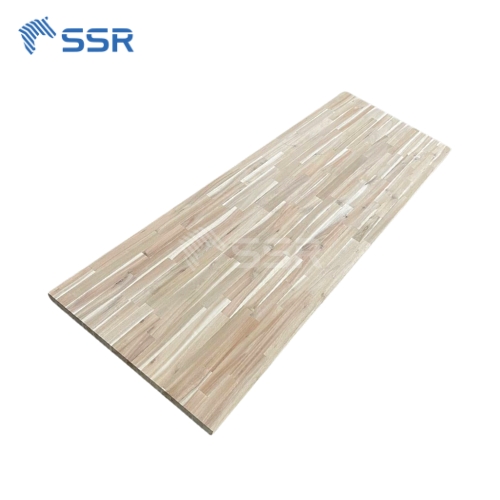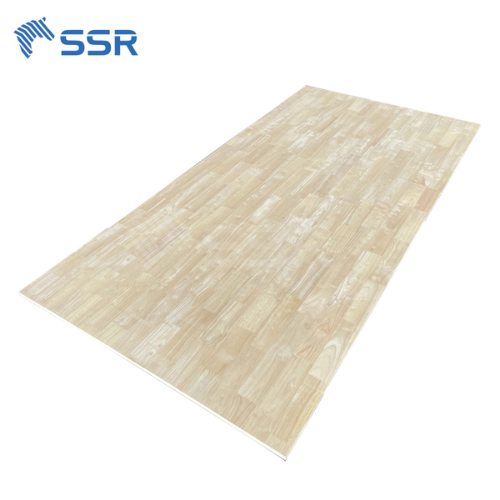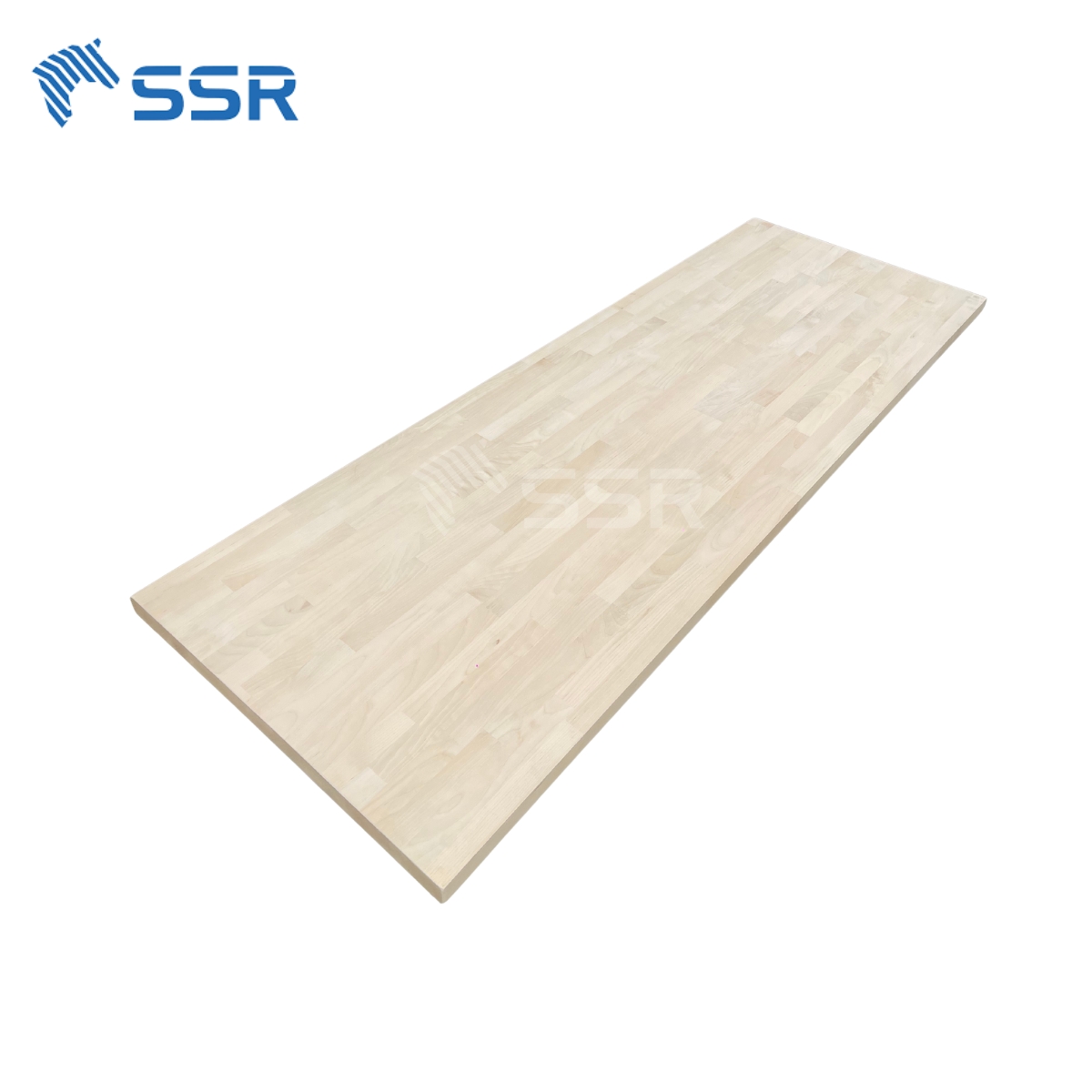NEWS
Kitchen cabinets are one of the most essential elements of any kitchen, providing storage, organization, and aesthetic appeal. Choosing the right cabinets can enhance the functionality and overall look of your space. Whether you’re remodeling your kitchen or building a new one, understanding kitchen cabinets’ construction, materials, and styles will help you make informed decisions
What Is Known as the Kitchen Cabinet?
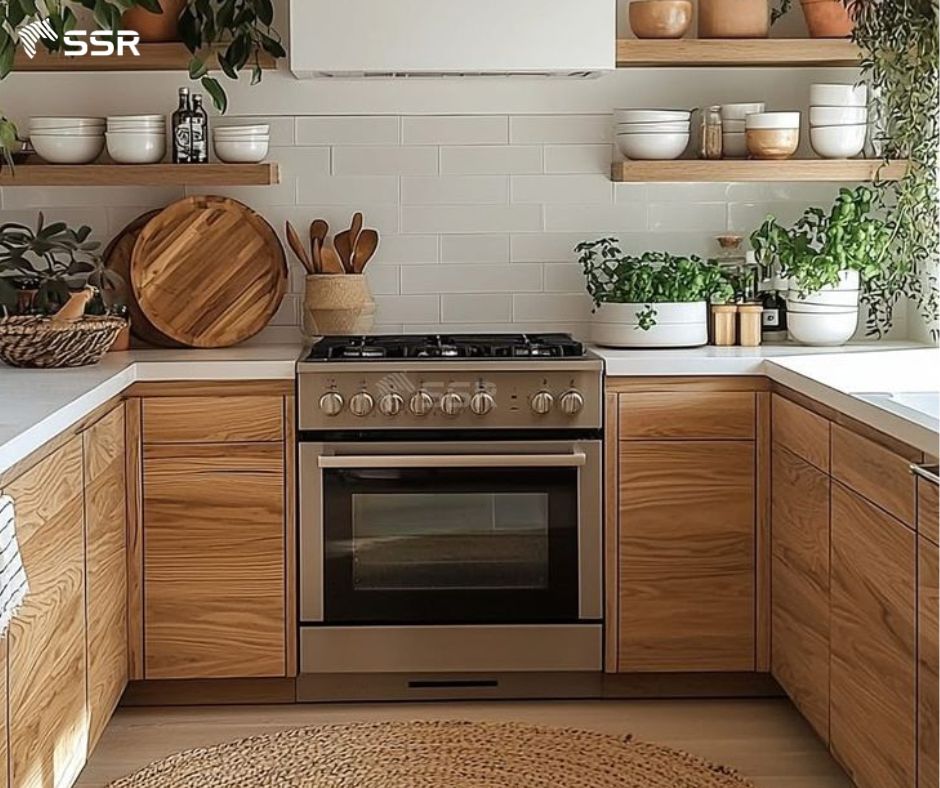
Kitchen cabinet
A kitchen cabinet is a built-in furniture piece designed to store food, cooking utensils, and kitchen equipment. It comes in various designs, sizes, and finishes to suit different kitchen layouts and styles. Cabinets are typically installed along walls, beneath countertops, and sometimes as standalone units like kitchen islands or pantry cabinets.
Anatomy of Kitchen Cabinet
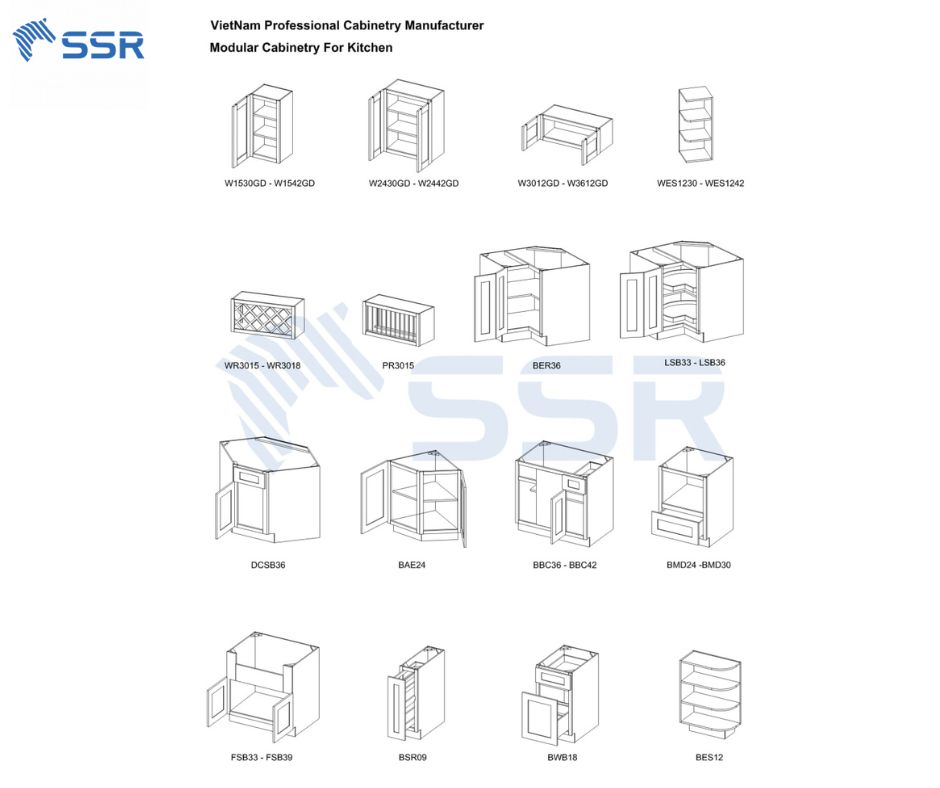
Kitchen cabinets design options at ssr
1. Cabinet Structure
- Face Frame: ¾” x 1 5/8″ hardwood face frame provides support and structure.
- Side Panels: Made from ½” thick plywood for durability.
- Back Panel: Not explicitly shown, but typically made from plywood or MDF for stability.
- Corner Block: Adds reinforcement to keep the cabinet sturdy.
2. Doors & Drawers
- Solid Wood Drawer Front: High-quality, durable wood face for an elegant finish.
- Plywood Drawer Bottom: Adds structural integrity while keeping the drawer lightweight.
- Dovetailed Drawer Box: 5/8″ thick construction with interlocking joints for strength.
- Soft-Close Drawer Glides: Under-mounted full-extension glides allow smooth and quiet operation.
- Euro-Style Concealed Hinges: Hidden hinges create a seamless look and allow for adjustable door positioning.
3. Shelving & Interior
- ¾” Plywood Shelving with Edge Banding: Ensures strength and prevents sagging under heavy loads.
- Stainless Adjustable Shelf Bracket: Allows flexibility in shelf positioning.
- Matching Interior Finish: Provides a cohesive and polished look inside the cabinet.
4. Additional Features
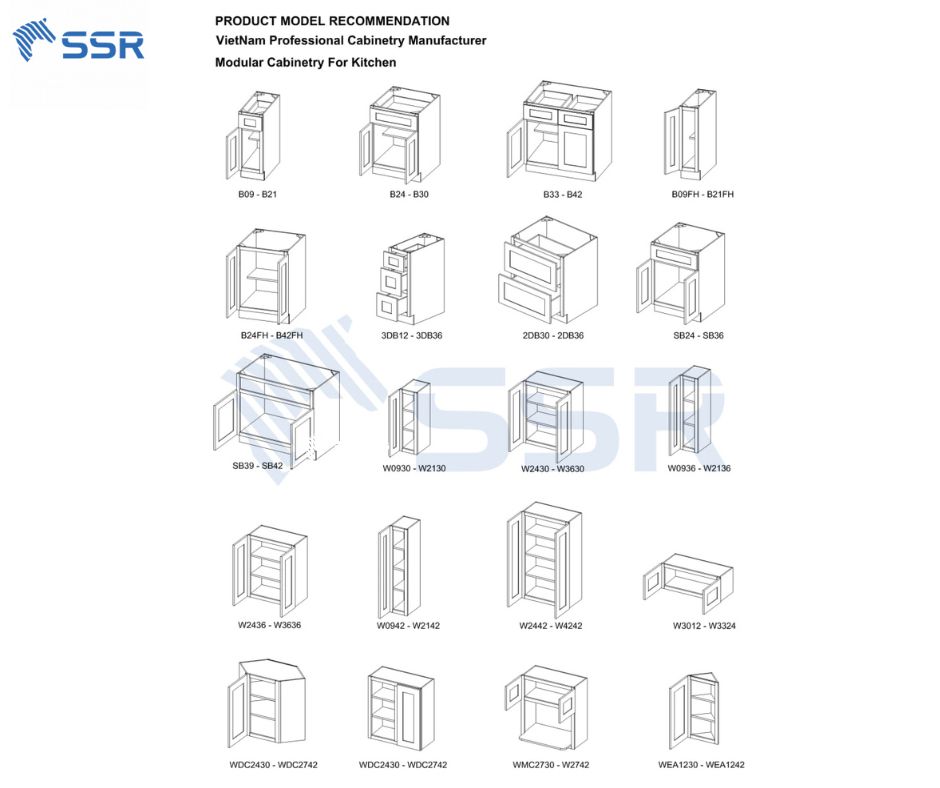
Types of kitchen cabinets
- Soft Door Bumper: Reduces noise and prevents wear when closing doors.
- Mortise & Tenon Joint: A strong and traditional woodworking technique used for door frame construction.
- Raised Center Panel: A decorative element that adds depth and character to the cabinet doors.
- ¼” Reveal: Indicates the small visible gap between the cabinet door and the frame when closed.
What Is the Function of Kitchen Cabinets?
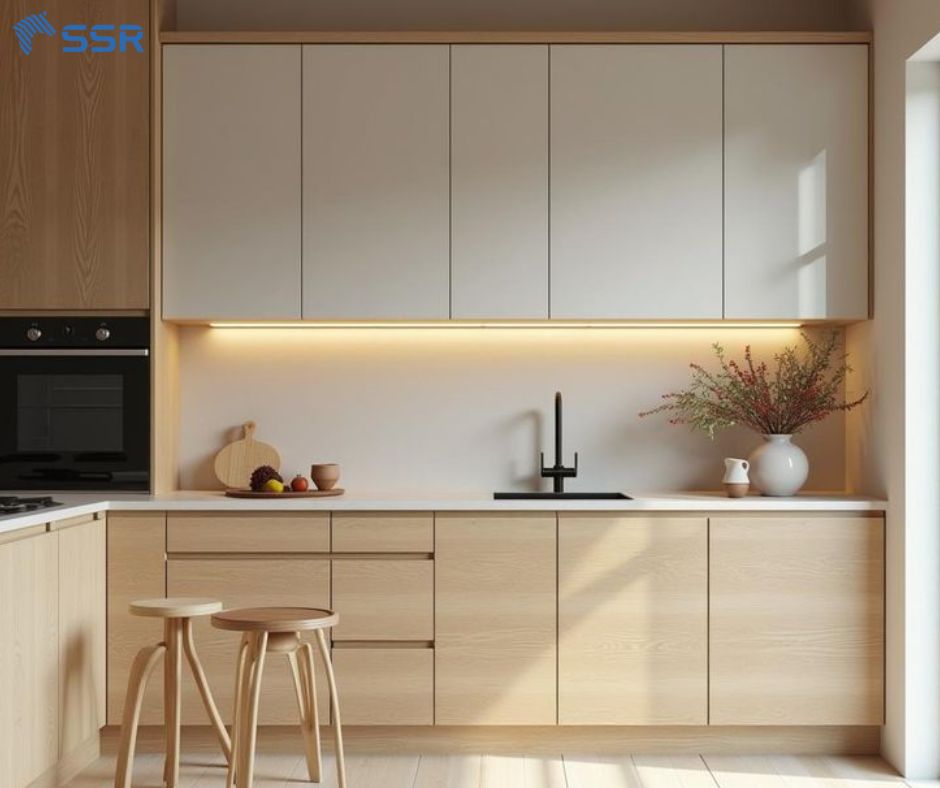
Function of kitchen cabinets
Kitchen cabinets serve several essential purposes:
- Storage: Keep kitchen essentials organized and easily accessible.
- Aesthetic Appeal: Enhance the kitchen’s visual style and complement its design.
- Space Optimization: Maximize available space with efficient layouts.
- Concealment: Hide plumbing, appliances, and other unsightly elements.
What’s the Best Cabinet Construction?
Choosing the best cabinet construction is essential for ensuring durability, functionality, and long-term value. Whether you’re selecting cabinets for kitchens, bathrooms, or storage spaces, high-quality construction makes a significant difference in longevity and performance. Here are the key elements that define the best cabinet construction:
1. Cabinet Box Material
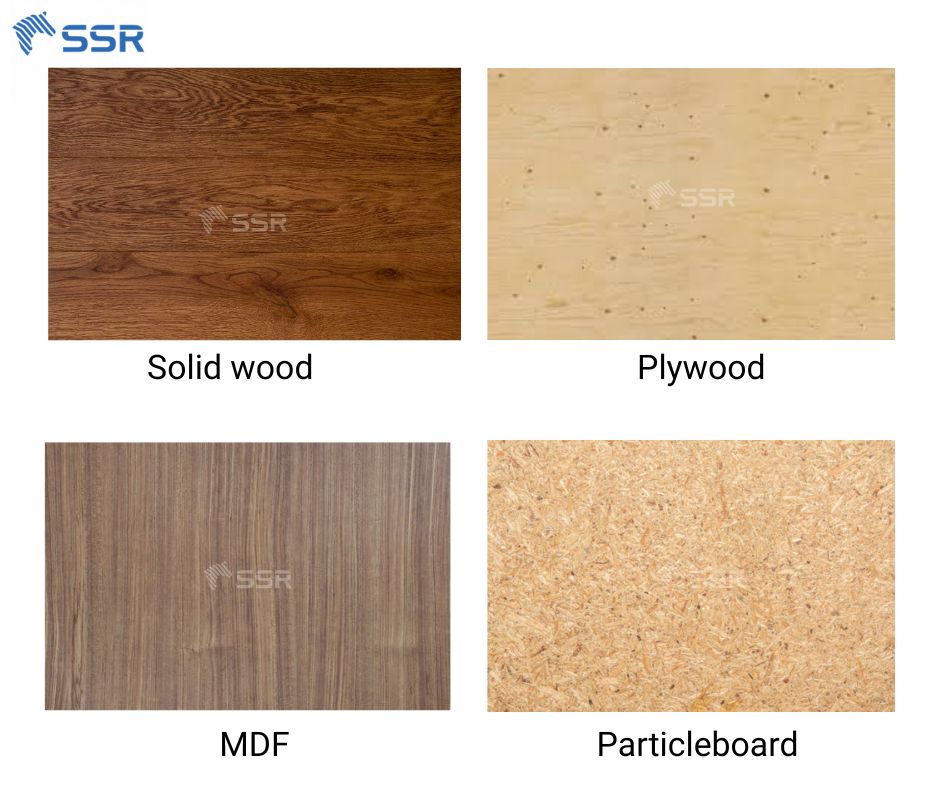
Cabinet box material
The foundation of a cabinet is its box, and the material used determines its strength and durability. Below are the most common cabinet box materials:
- Solid Wood: Known for its strength and longevity, solid wood is an excellent choice for cabinet frames and doors. However, it can expand or contract with temperature and humidity changes, requiring proper sealing and finishing.
- Plywood: One of the best alternatives to solid wood, plywood is strong, lightweight, and highly resistant to warping. Look for ¾-inch plywood for superior durability in cabinet boxes and shelves.
- MDF (Medium-Density Fiberboard): A smooth, cost-effective option that is ideal for painted cabinets. While more stable than solid wood in humid conditions, MDF is less durable than plywood and can be prone to chipping.
- Particleboard: A budget-friendly choice often used in lower-end cabinets. However, it is highly susceptible to moisture damage and does not offer the same level of durability as plywood or solid wood.
2. Joinery Techniques for Strength
The way cabinets are assembled impacts their overall strength and longevity. High-quality joinery techniques result in sturdy, well-built cabinets that can withstand daily use.
- Dovetail Joints: Found in high-end drawer construction, dovetail joints feature interlocking sections that create superior strength and durability.
- Mortise and Tenon: A traditional woodworking technique offering excellent stability. This method is often used in high-quality cabinet doors and frames.
- Stapled or Glued Joints: These methods are commonly found in lower-end cabinets. While quick and inexpensive, they do not provide the same strength as dovetail or mortise-and-tenon joints.
3. Hinges & Drawer Glides for Smooth Operation
Cabinet doors and drawers are among the most frequently used parts, making high-quality hinges and glides essential.
- Soft-Close Hinges: Prevent doors from slamming, reducing wear and tear. Look for adjustable, concealed hinges for a seamless and modern look.
- Full-Extension, Soft-Close Drawer Glides: Allow smooth, quiet operation and full access to the drawer’s interior.
- Undermount glides are preferable over side-mounted ones as they provide more drawer space and a cleaner appearance.
4. Back Panel & Cabinet Construction
A sturdy back panel is crucial for structural integrity and easy installation.
- Full-Height Back Panels: A single, solid back panel made from ½-inch or thicker plywood adds strength and prevents wobbling.
- Corner Bracing: Reinforced corners with wooden or metal brackets provide additional stability and prevent the cabinet from shifting over time.
5. Shelving & Interior Features
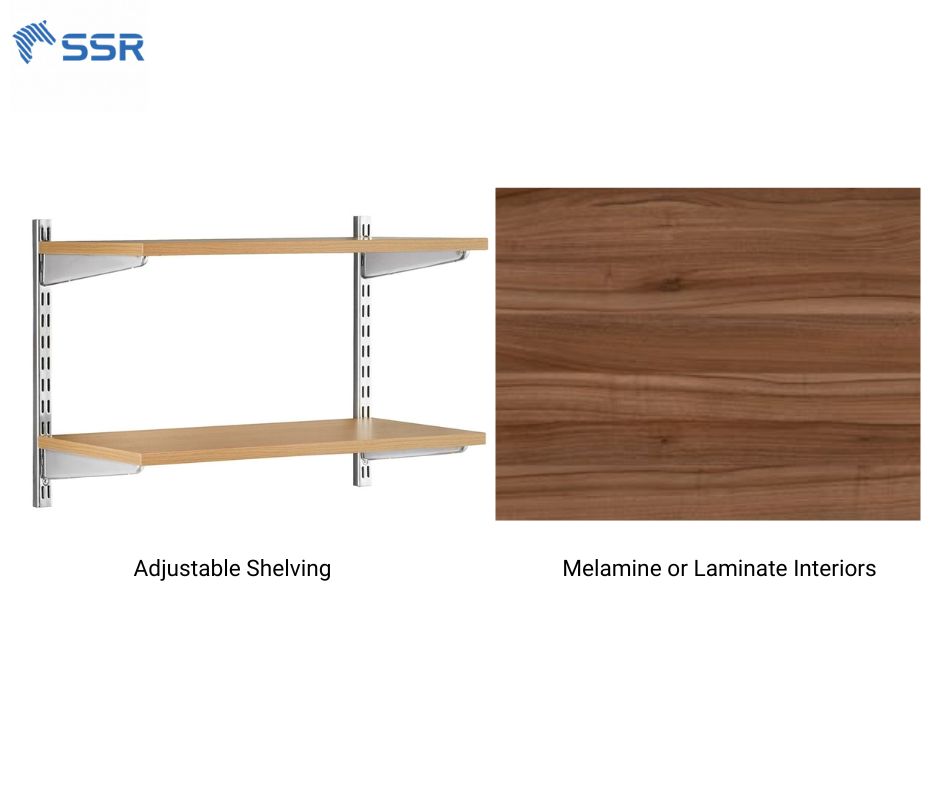
Sheving and interior features
Well-designed cabinet interiors enhance functionality and storage efficiency.
- Adjustable Shelving: Provides flexibility in storage and maximizes space. Look for ¾-inch plywood shelves to prevent sagging under heavy weight.
- Melamine or Laminate Interiors: These materials offer a smooth, easy-to-clean surface that resists moisture and stains, making them ideal for kitchen and bathroom cabinets.
6. Face Frame vs. Frameless Cabinets
Cabinet construction styles impact both the appearance and accessibility of storage spaces.
- Face Frame Cabinets: Feature a solid wood frame around the front, providing additional strength and a more traditional look. Face frames help keep cabinets square and offer added durability.
- Frameless (European-Style) Cabinets: Lack a front frame, creating a sleek, modern appearance with better accessibility. However, they require precise construction for durability, as the cabinet box itself must provide structural integrity.
How to Organize and Accessorize Your Cabinets?
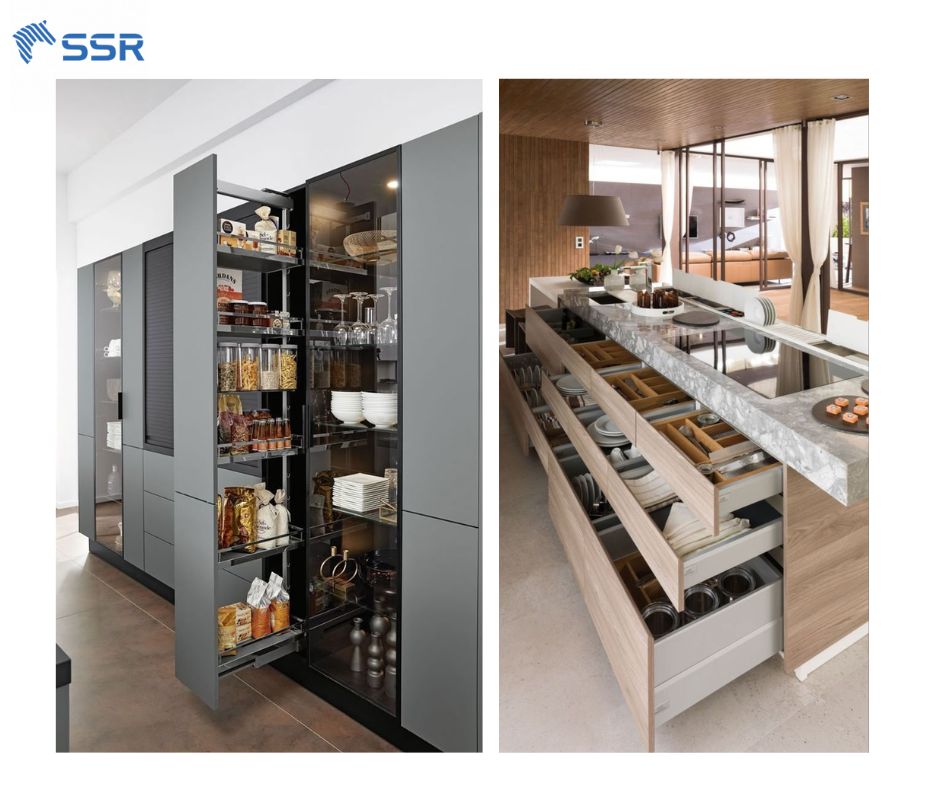
How to organize and accessorize your cabinets
1. Use Drawer Organizers for Utensils and Cutlery
Messy drawers can make it difficult to find what you need. Invest in adjustable drawer dividers or custom-fit trays to keep cutlery, cooking tools, and small kitchen gadgets neatly separated. Consider bamboo or plastic organizers for durability and easy cleaning.
2. Install Pull-Out Trays for Easy Access to Deep Cabinets
Deep cabinets often become a black hole where items get lost. Pull-out trays or sliding shelves allow you to fully extend the space, making it easier to reach pots, pans, and small appliances. Opt for soft-close mechanisms to reduce noise and wear over time.
3. Utilize Lazy Susans for Corner Cabinets
Corner cabinets can be tricky to organize, but Lazy Susans help maximize storage and accessibility. These rotating trays make it easy to grab spices, condiments, or baking supplies without rummaging through clutter. Consider tiered Lazy Susans for even better space optimization.
4. Add Hooks or Racks for Hanging Items
Make use of vertical space by installing hooks or racks inside cabinet doors or under shelves. Use them to hang mugs, measuring cups, pot lids, or even dish towels. Tension rods can also help store baking sheets and cutting boards upright for easier access.
5. Label or Categorize Pantry Items for Better Organization
A well-organized pantry saves time and reduces food waste. Use clear storage bins, stackable containers, or glass jars to keep dry goods fresh and visible. Label each container with its contents and expiration date. Arrange items by category—grains, snacks, canned goods, and baking essentials—for quick access.
How to Update Kitchen Cabinets Without Replacing Them?
- Refinishing or Painting: Give old cabinets a fresh look with new paint or stain.
- Replace Hardware: Upgrade handles, knobs, and hinges for a modern touch.
- Add Glass Inserts: Install glass panels on cabinet doors for an elegant look.
- Install Under-Cabinet Lighting: Improve visibility and ambiance.
- Apply Peel-and-Stick Wallpaper: Add texture or patterns inside cabinets for a unique touch.
What You Should Know Before Choosing Kitchen Cabinets?

What you should know before choosing kitchen cabinets
Selecting the right kitchen cabinets is a major decision that affects both the functionality and aesthetic of your kitchen. Here’s what you should consider before making a choice:
1. Material Matters: Weighing Durability vs. Cost
The material you choose significantly impacts the longevity and appearance of your cabinets. Here are some common options:
- Solid Wood – Offers a premium, natural look and exceptional durability but can be expensive and susceptible to moisture.
- MDF (Medium-Density Fiberboard) – A more budget-friendly option with a smooth finish, making it ideal for painted cabinets. However, it’s less resistant to moisture and impact.
- Plywood – Known for its strength and resistance to warping, making it a great mid-range option for durability.
- Particleboard – The most affordable but also the least durable, as it can swell when exposed to moisture.
- Thermofoil & Laminate – Easy to clean and available in various colors and patterns, but they may peel or chip over time.
2. Budgeting: Finding Cost-Effective Solutions
Kitchen cabinets can be one of the biggest expenses in a kitchen remodel. Before deciding, consider:
- Stock Cabinets – The most affordable, but limited in size and style options.
- Semi-Custom Cabinets – A middle-ground choice that allows for some modifications in design and functionality.
- Custom Cabinets – The most expensive option but fully tailored to your kitchen’s needs and space.
- Refacing or Refinishing – If your existing cabinets are in good condition, updating doors or repainting can be a cost-effective alternative.
3. Functionality Over Style: Aesthetic Meets Practicality
While the look of your cabinets is important, functionality should be a top priority. Keep these features in mind:
- Soft-close hinges and drawers to prevent slamming and prolong cabinet life.
- Full-extension drawers for easy access to the entire storage space.
- Pull-out shelves and lazy Susans to maximize storage in deep or corner cabinets.
- Built-in organizers for utensils, spices, or waste bins to reduce clutter.
4. Customization Options
Understanding your customization needs will help you pick the right type:
- Pre-Made (Stock) Cabinets – Available in standard sizes and limited styles but budget-friendly and ready for quick installation.
- Semi-Custom Cabinets – Offer some flexibility in dimensions, finishes, and storage solutions while maintaining a reasonable price.
- Custom Cabinets – Completely tailored to your kitchen, ideal for unique layouts or specific design preferences, though they come at a higher price.
5. Installation Process: DIY or Professional Help?
Deciding how your cabinets will be installed can impact both cost and convenience:
- DIY Installation – Suitable for experienced DIYers, as it requires precise measuring and leveling. It can save money but may take longer and lead to mistakes.
- Professional Installation – Ensures a seamless and secure setup, especially for custom or complex cabinetry. Though pricier, it guarantees quality craftsmanship.
15 Types of Kitchen Cabinets
- Wood Cabinets
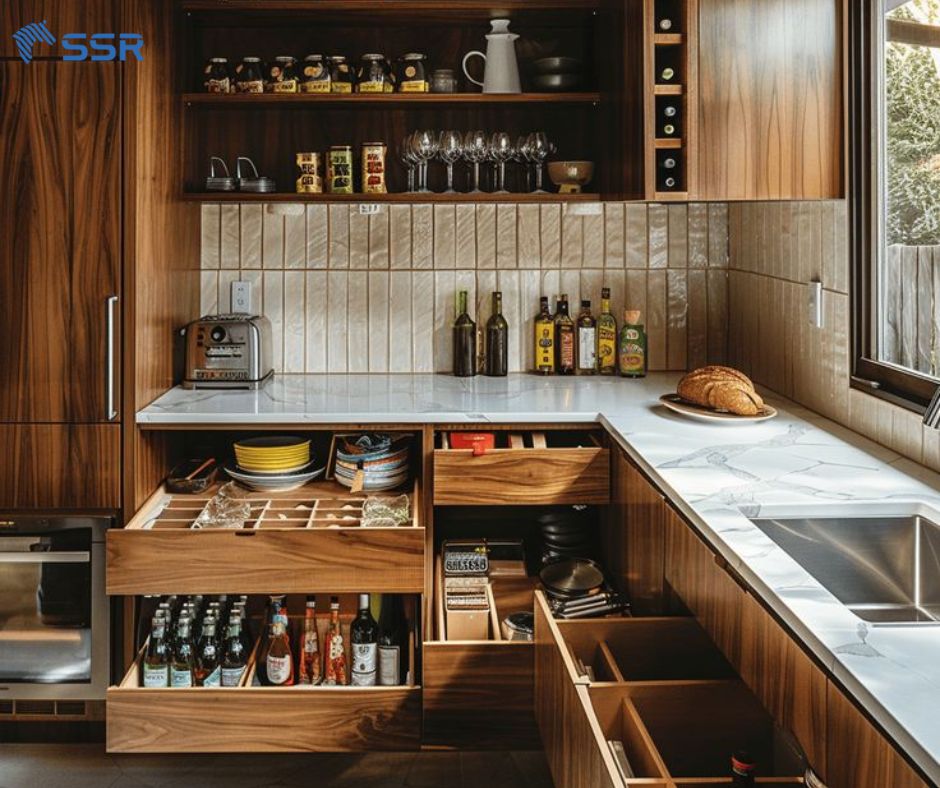
Wood cabinets
Classic and durable, offering a timeless appeal.
- Inset Cabinets
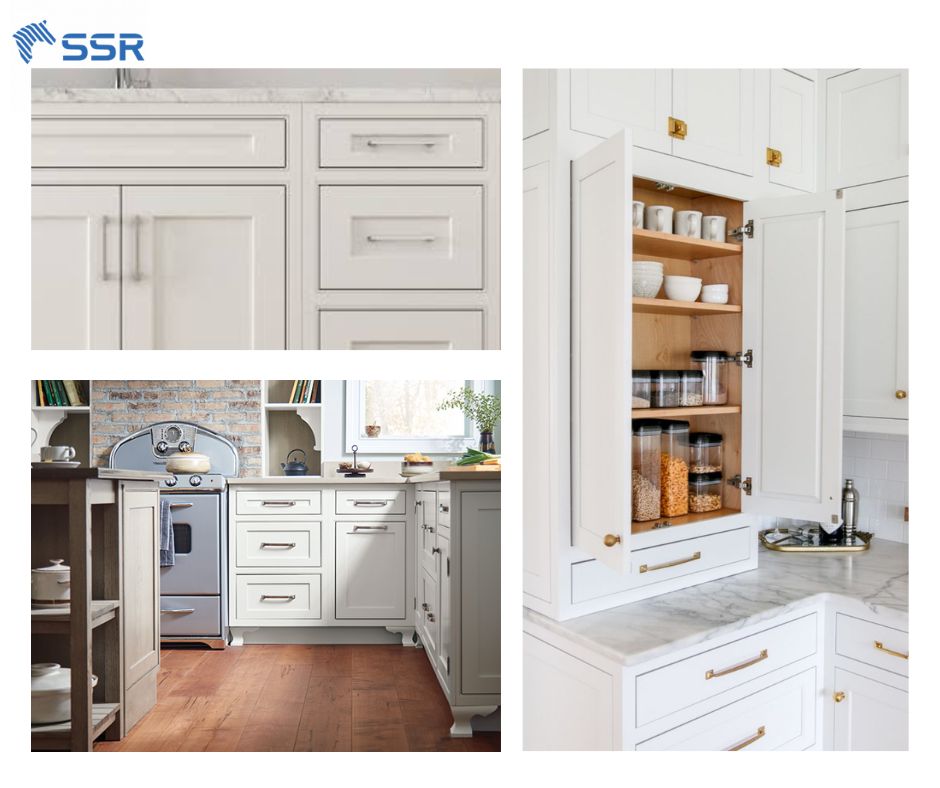
Inset cabinets
Doors fit inside the cabinet frame for a seamless, traditional look.
- Full Overlay Cabinets
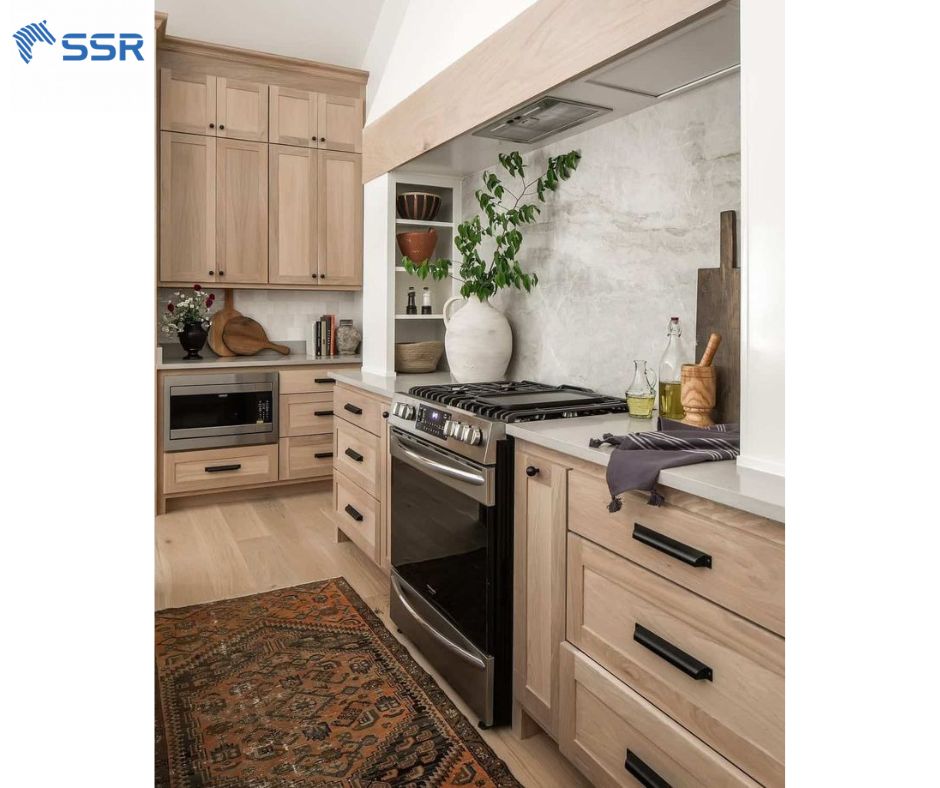
Full overlay cabinets
Doors completely cover the cabinet frame, providing a modern aesthetic.
- Partial Overlay Cabinets
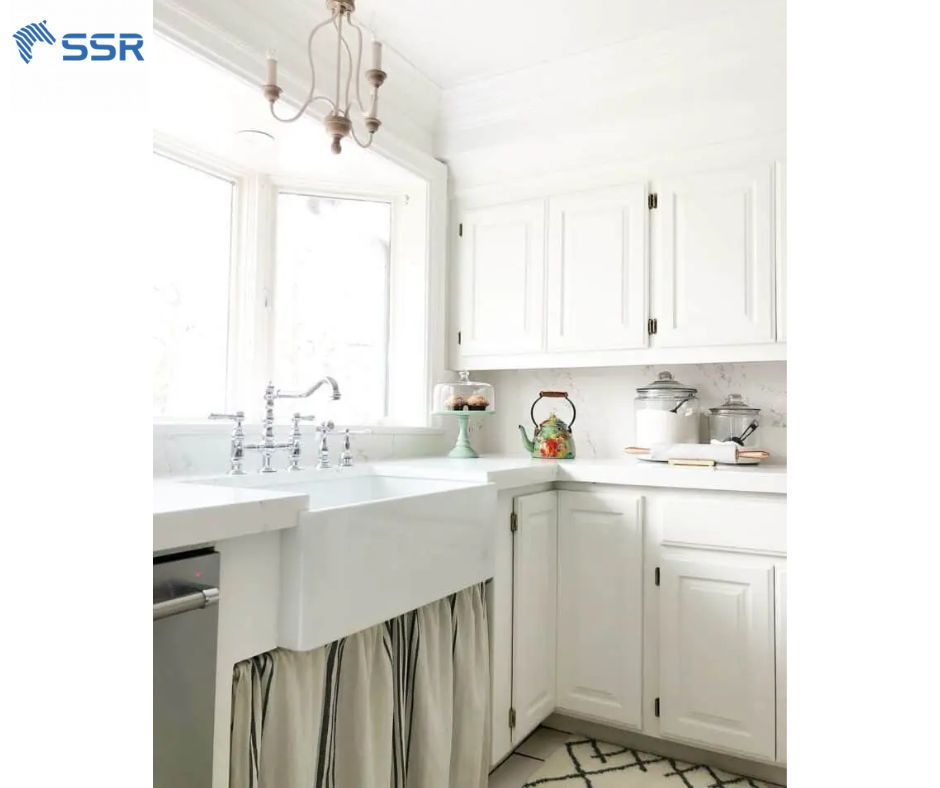
Partial overlay cabinets
Doors partially cover the frame, offering a traditional style at a lower cost.
- Shaker Cabinets
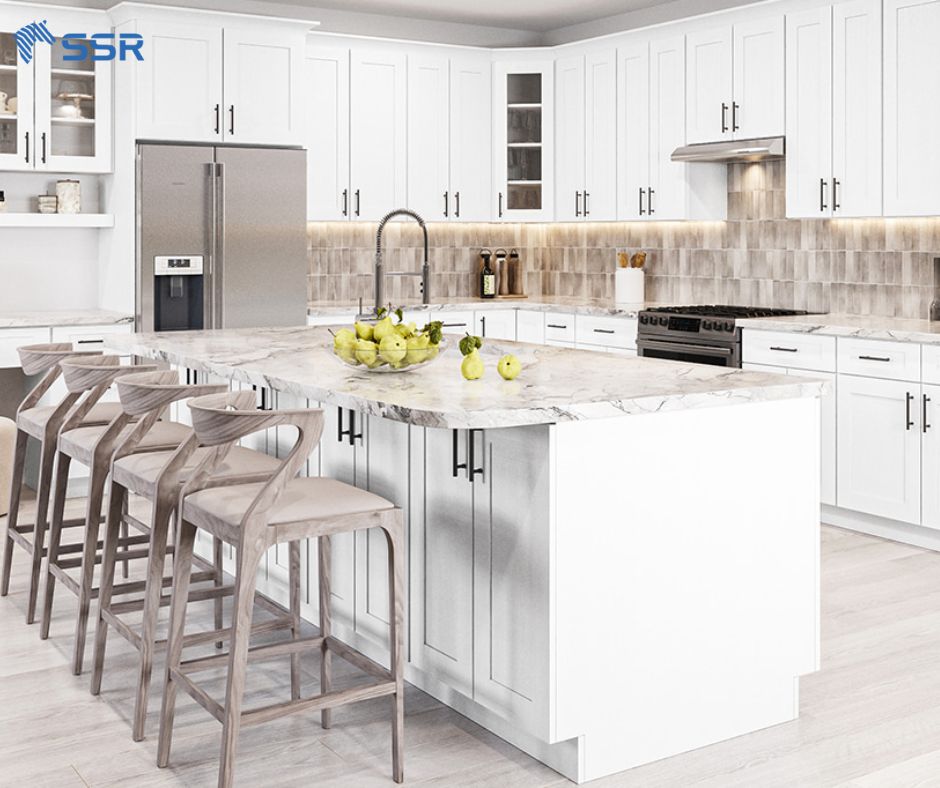
Shaker cabinets
Simple and versatile with clean lines, ideal for contemporary and classic kitchens.
- Tall Cabinets
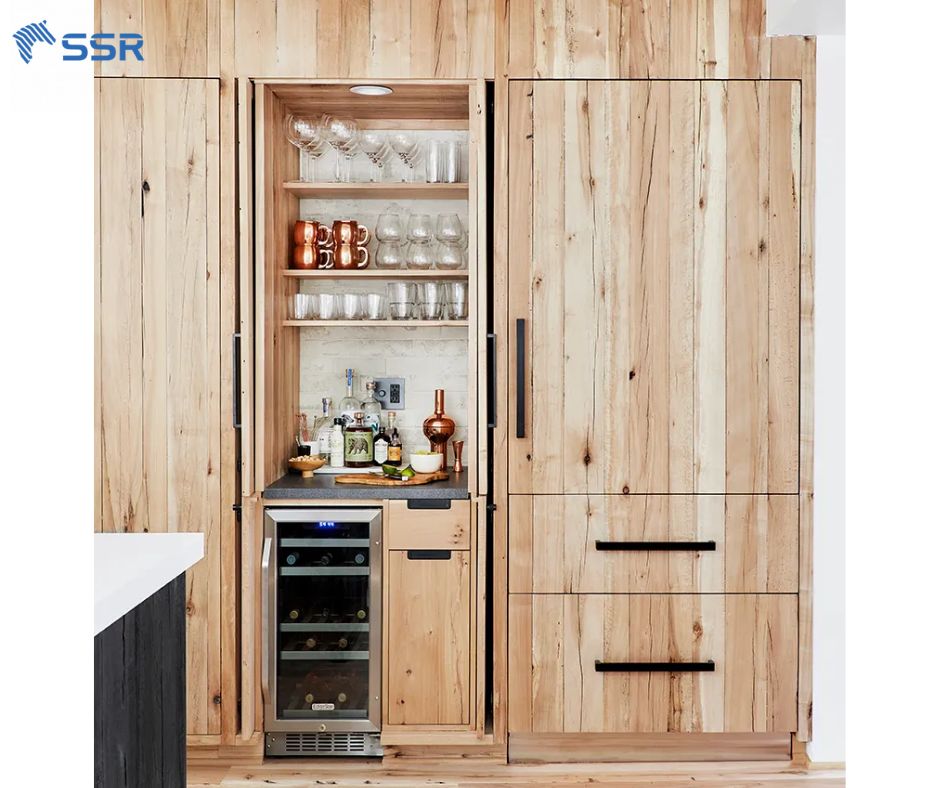
Tall cabinets
Extend from floor to ceiling, providing extra storage space.
- Base Cabinets
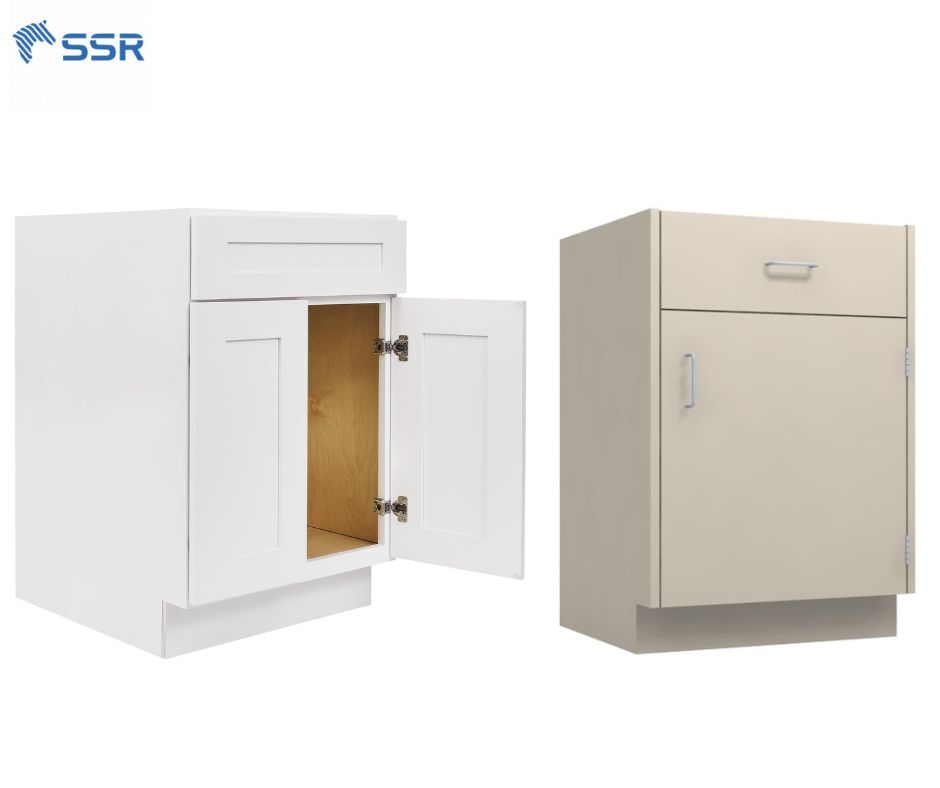
Base cabinets
Installed beneath countertops for foundational storage and support.
- Arched Cabinets
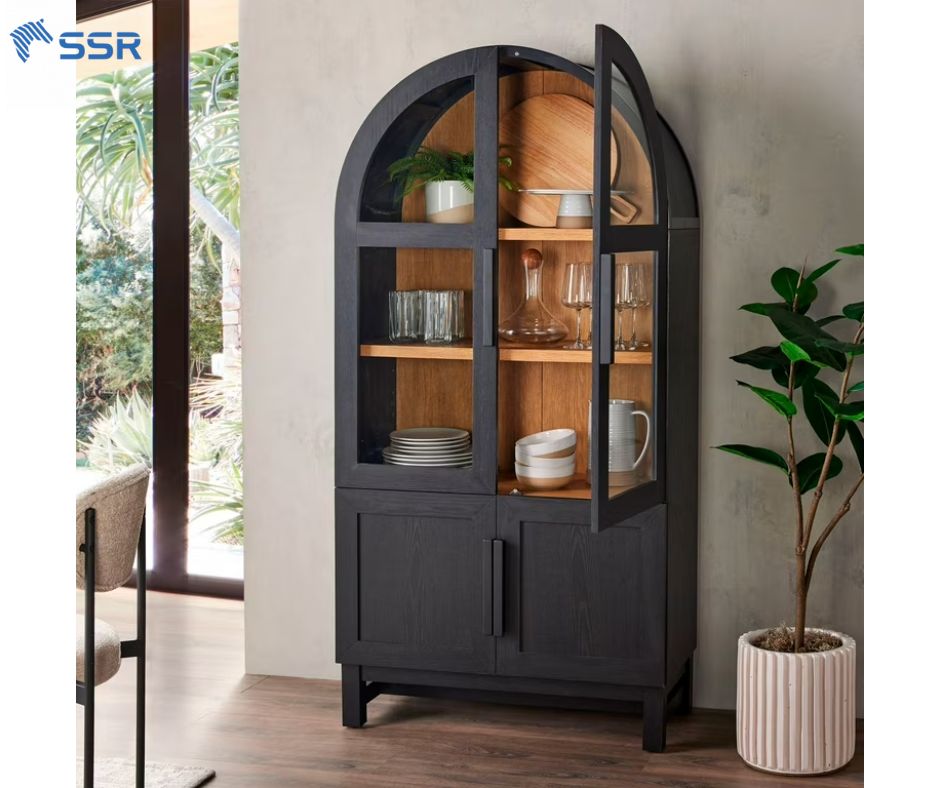
Arched cabinets
Feature curved or decorative arch designs for a more traditional look.
- No-Hardware Cabinets
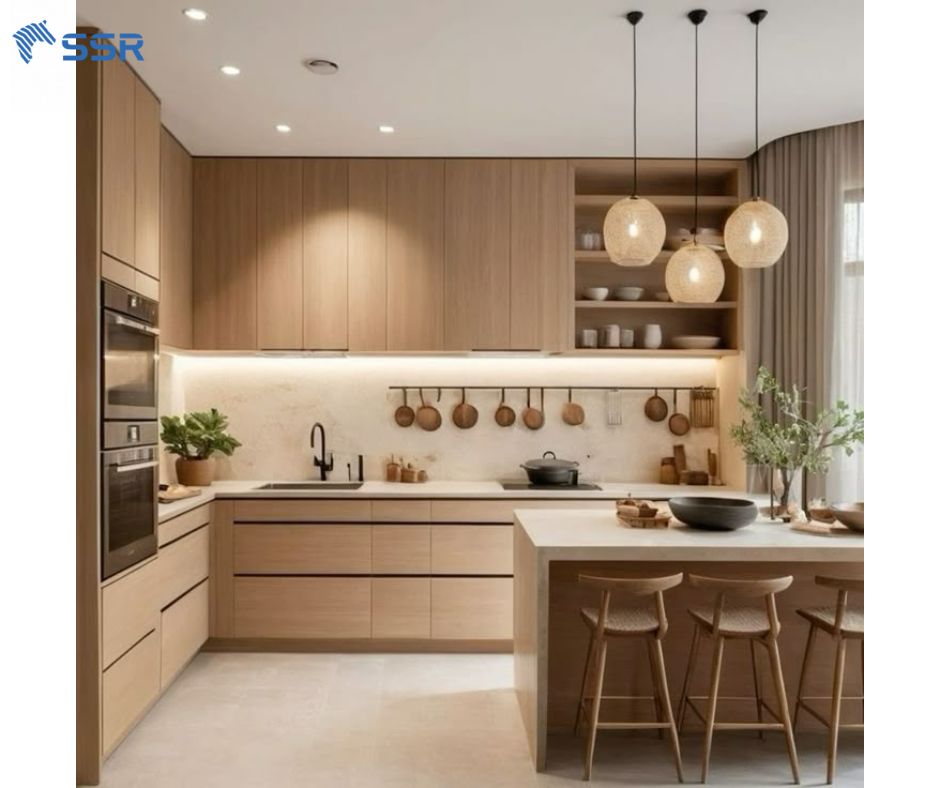
No hardware cabinets
Minimalist design with push-to-open or recessed handles.
- Open Upper Cabinets
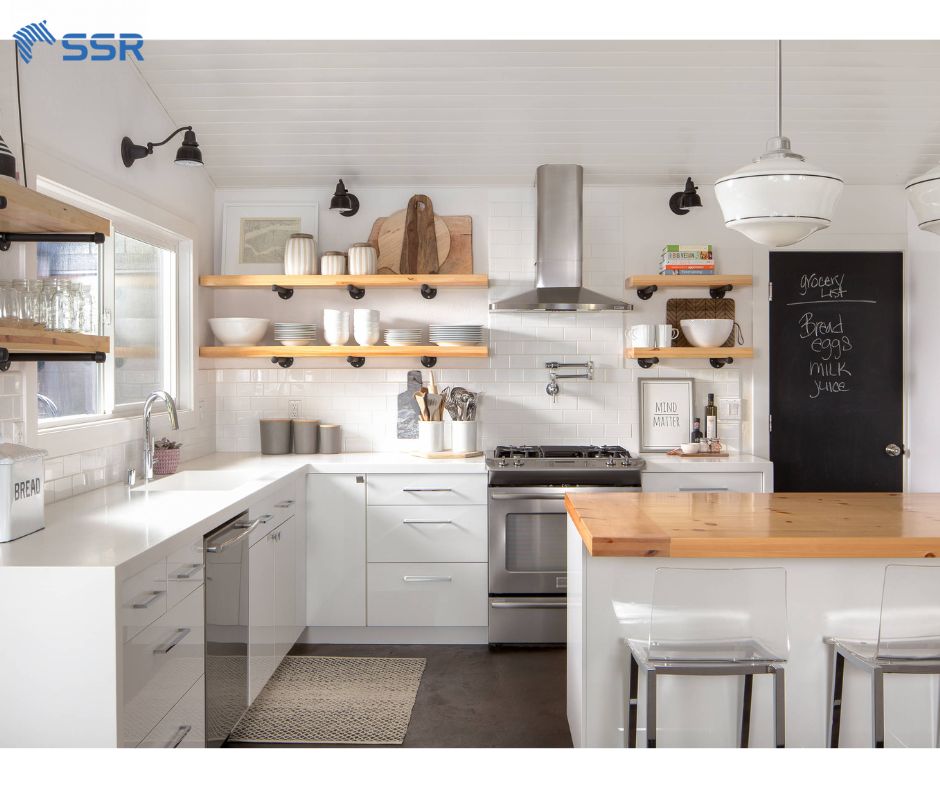
Open upper cabinets
Exposed shelving for a modern and airy kitchen layout.
- Distressed Cabinets
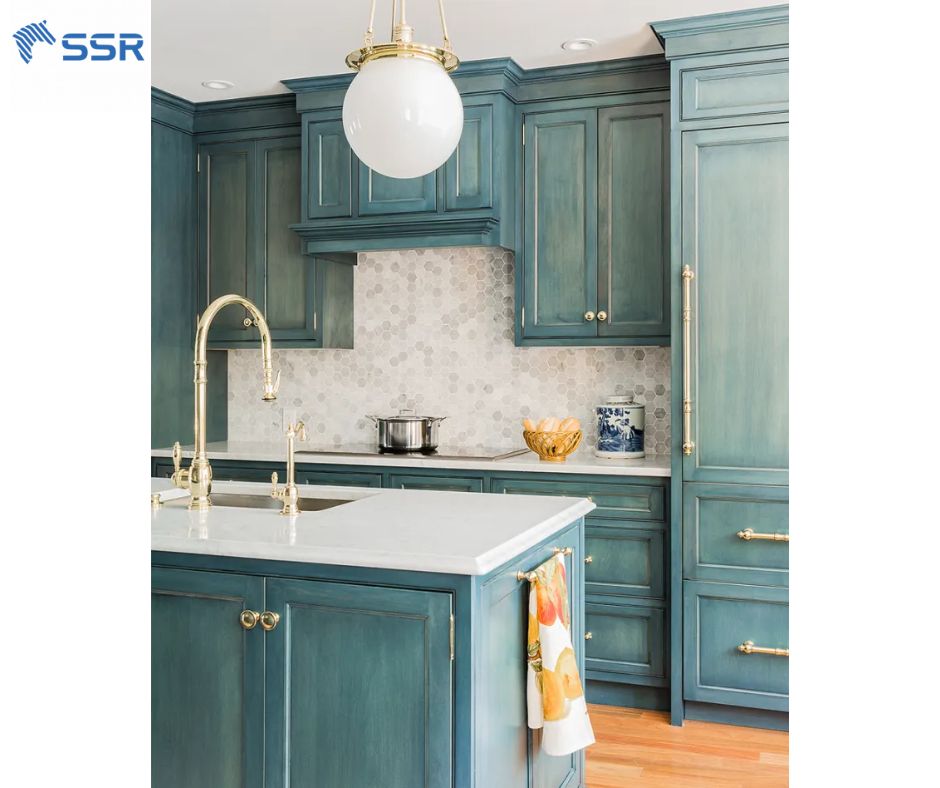
Distressed cabinets
Give a vintage, rustic appeal with an aged finish.
- Flat-Panel Cabinets
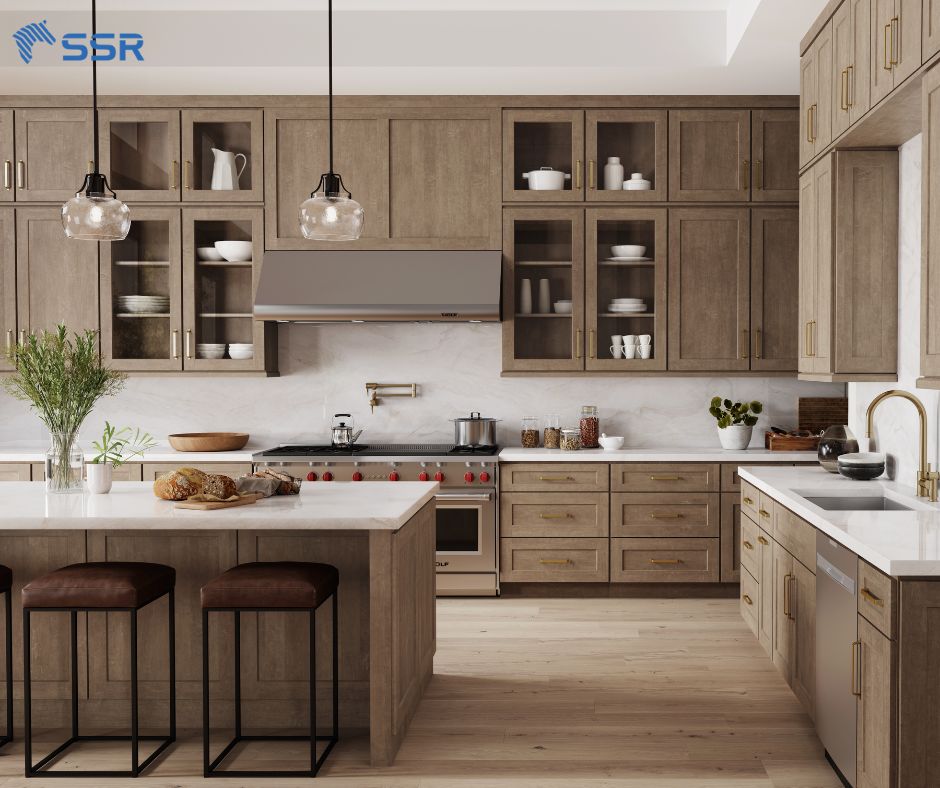
Flat panel cabinets
Sleek, modern look with a smooth surface.
- Fluted Glass Cabinets

Fluted glass cabinets
Glass panels with vertical textures add sophistication.
- Textured Cabinets

Textured cabinets
Incorporate unique patterns and materials for added depth.
- Glossy Cabinets
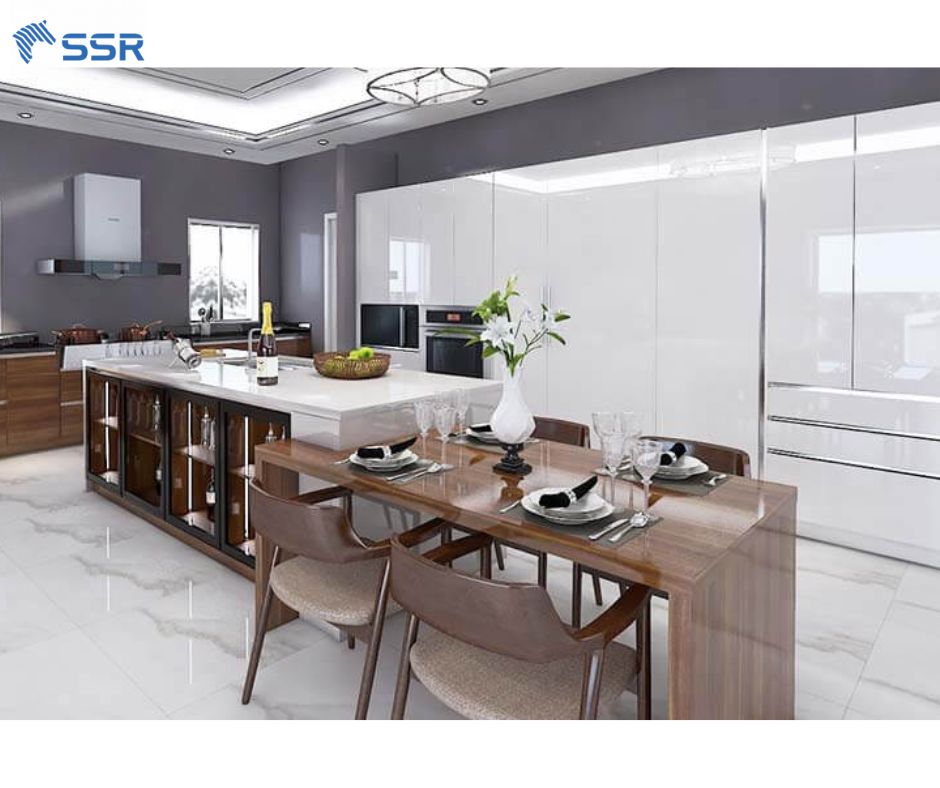
Glossy cabinets
High-shine finish that reflects light, making spaces look larger.
SSR VINA – Your Trusted Kitchen Cabinets Supplier
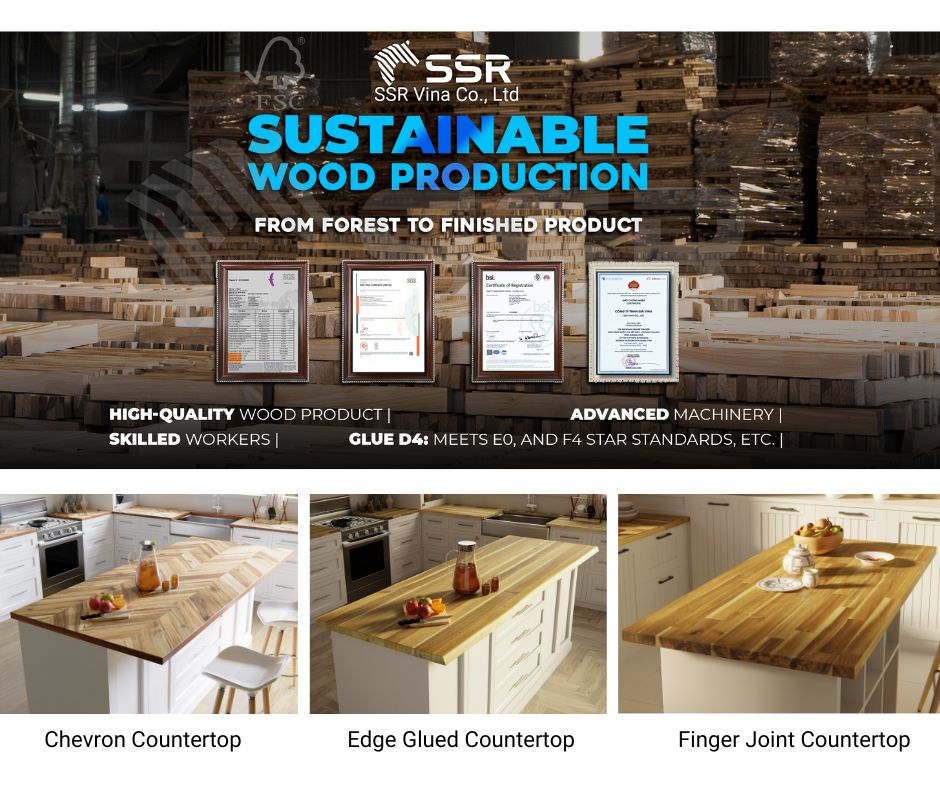
SSR VINA kitchen cabinet supplier
At SSR VINA, we take pride in offering high-quality, sustainably sourced kitchen cabinets. With over 15 years of expertise in wood production and export, we cater to residential and commercial projects with customizable options and premium craftsmanship.
Why Choose SSR VINA?
- Premium Quality: Made from durable, responsibly sourced wood.
- Customization Options: Tailored to fit various design preferences.
- Sustainability Commitment: FSC-certified materials for eco-conscious choices.
- Reliable Support: Expert guidance and long-term warranties.
Standard Dimensions of our Kitchen Cabinets
- Base Cabinets
Type: 1 door, 1 drawer
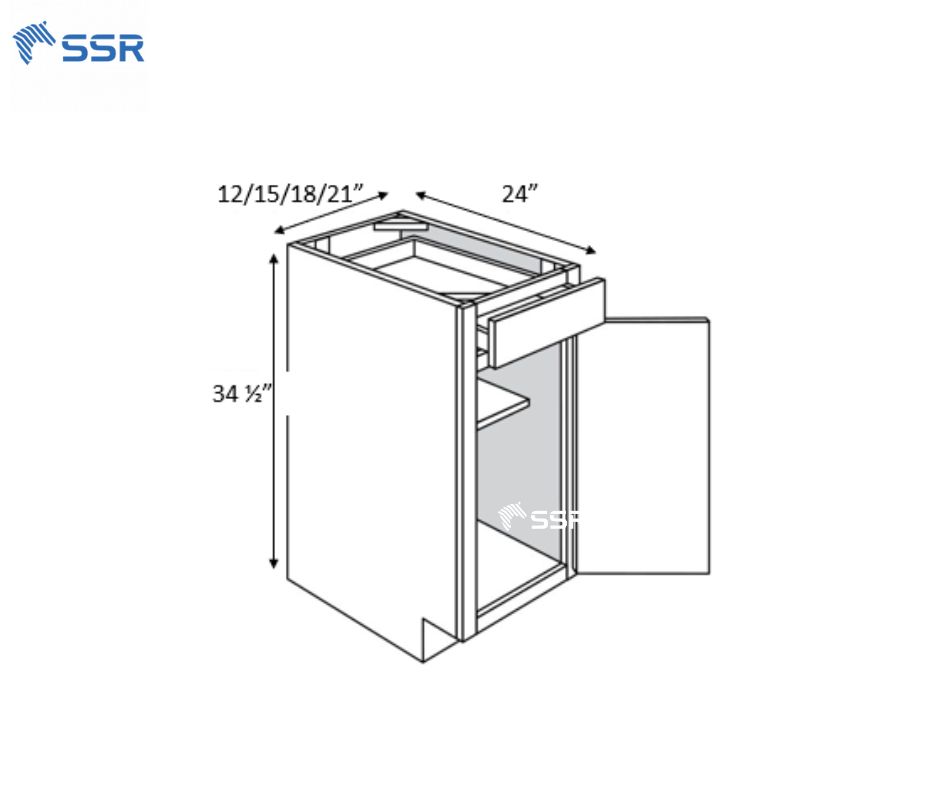
Base cabinet 1 door 1 drawer
| Size (mm) | Size (inches) | |
| Depth | 609.6 | 24 |
| Width | 304.8/381/457.2/533.4 | 12/15/18/21 |
| Height | 876.3 | 34 ½” |
Type: 2 doors, 1 drawer
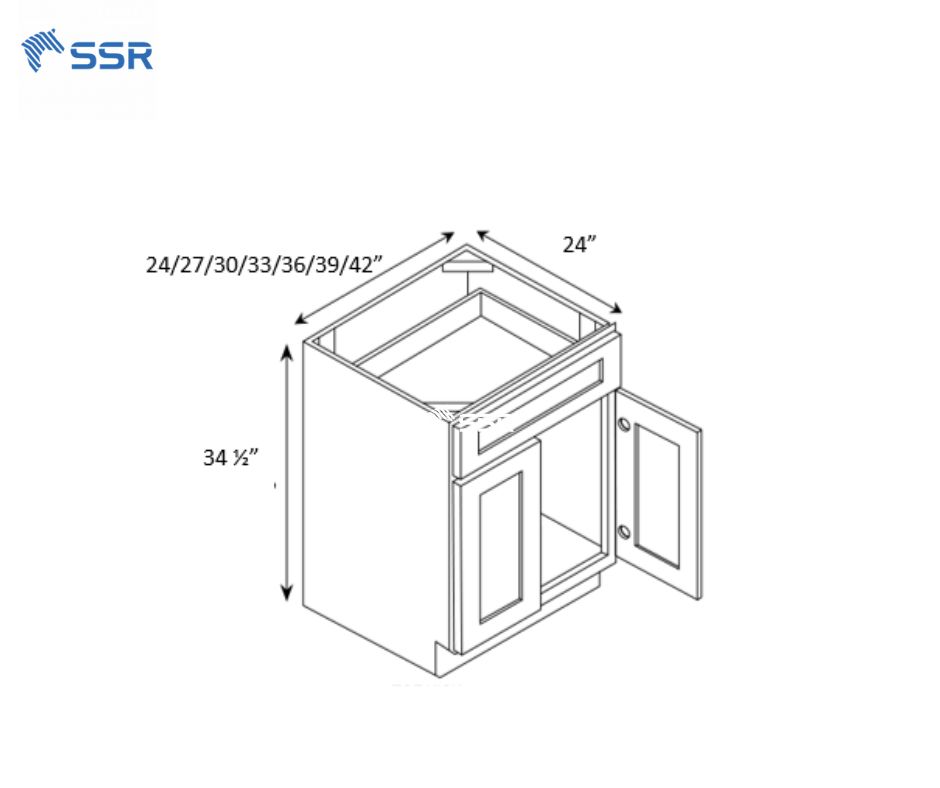 base Cabinet 2 doors 1 drawer
base Cabinet 2 doors 1 drawer
| Size (mm) | Size (inches) | |
| Depth | 609.6 | 24 |
| Width | 609.6/685.8/762/838.2/914.4
/990.6/1066.8 |
24/27/30/33/36/39/42 |
| Height | 876.3 | 34 ½” |
Type: 2 doors, 2 drawers
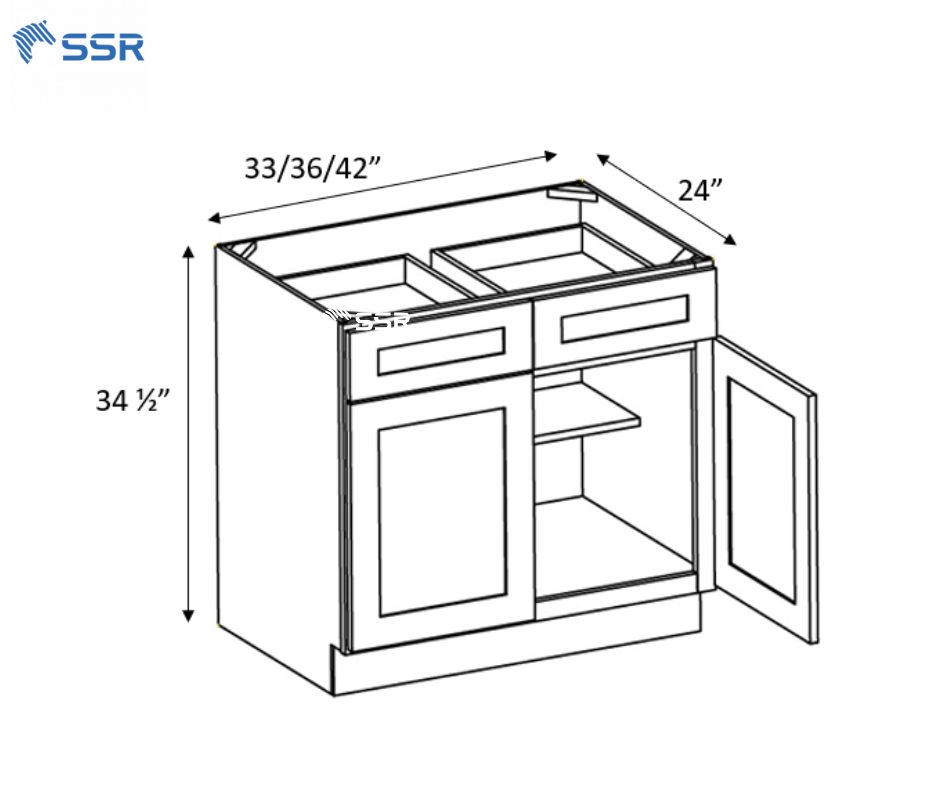
Base cabinet 2 doors 2 drawers
| Size (mm) | Size (inches) | |
| Depth | 609.6 | 24 |
| Width | 838.2/914.4/1066.8 | 33/36/42 |
| Height | 876.3 | 34 ½” |
Type: 3 drawers

Base cabinet 3 drawers
| Size (mm) | Size (inches) | |
| Depth | 609.6 | 24 |
| Width | 381/457/533/610/762/914 | 15/18/21/24/30/36 |
| Height | 876.3 | 34 ½” |
Type: 2 doors
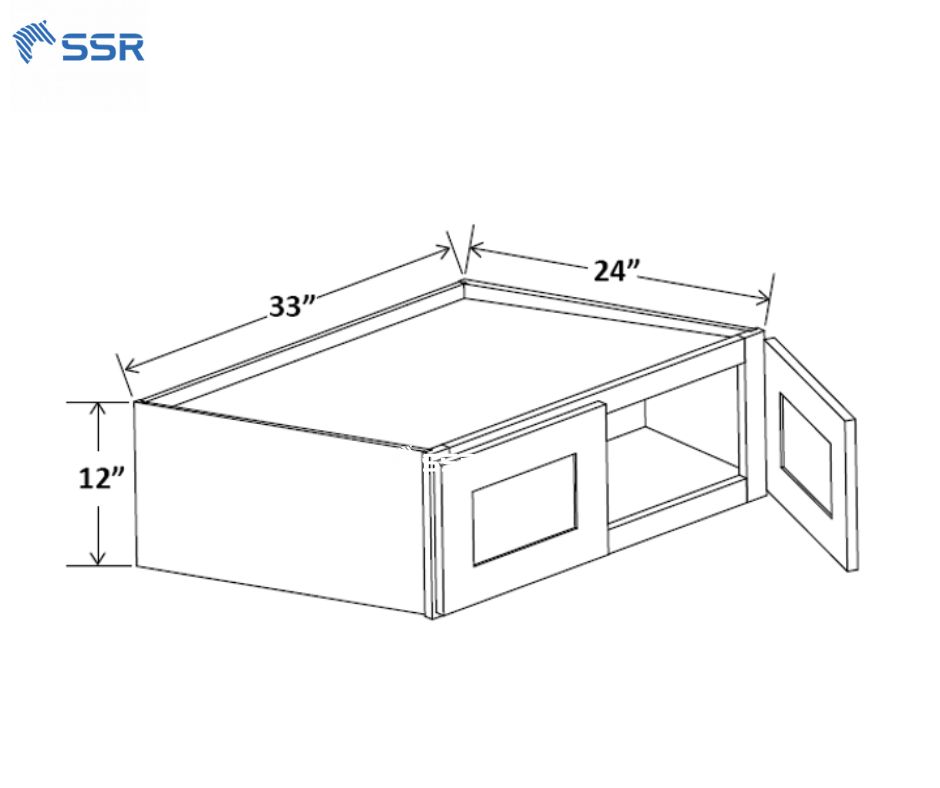
Base cabinet 2 doors
| Size (mm) | Size (inches) | |
| Depth | 609.6 | 24 |
| Width | 838.2/914,4 | 33/36 |
| Height | 304.8/457.2/609.6 | 12/18/24 |
Wall Cabinets
Type: 2 doors, 1 shelf
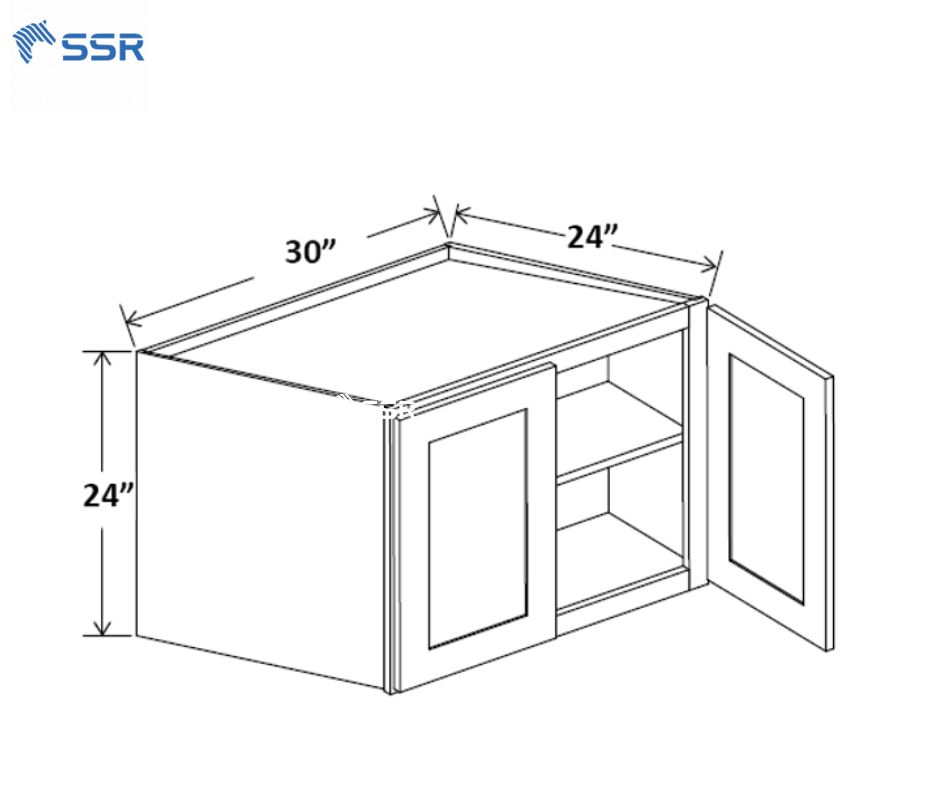
Wall cabinet 2 doors 1 shelf
| Size (mm) | Size (inches) | |
| Depth | 304.8/609.6 | 12/24 |
| Width | 762/838.2/914.4 | 30/33/36 |
| Height | 609.6 | 24 |
Type: 2 doors, 2 shelves
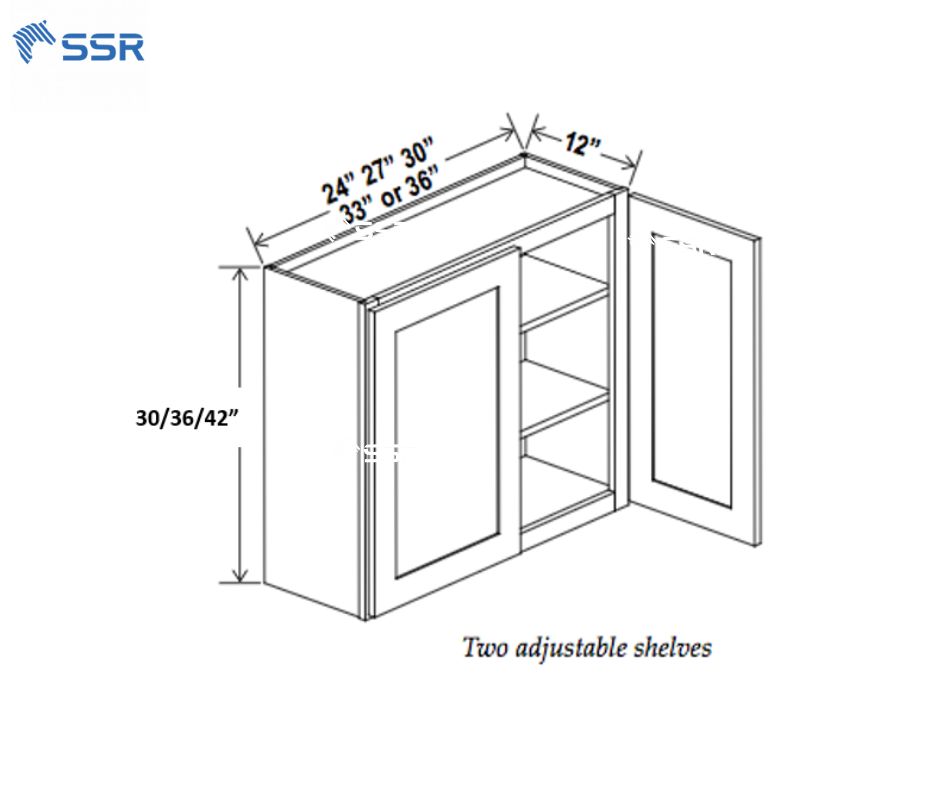
Wall cabinet 2 doors 2 shelves
| Size (mm) | Size (inches) | |
| Depth | 609.6 | 24 |
| Width | 838.2/914.4/1066.8 | 33/36/42 |
| Height | 876.3 | 34 ½” |
Tall Cabinets
Type: 2 doors, 3 drawers
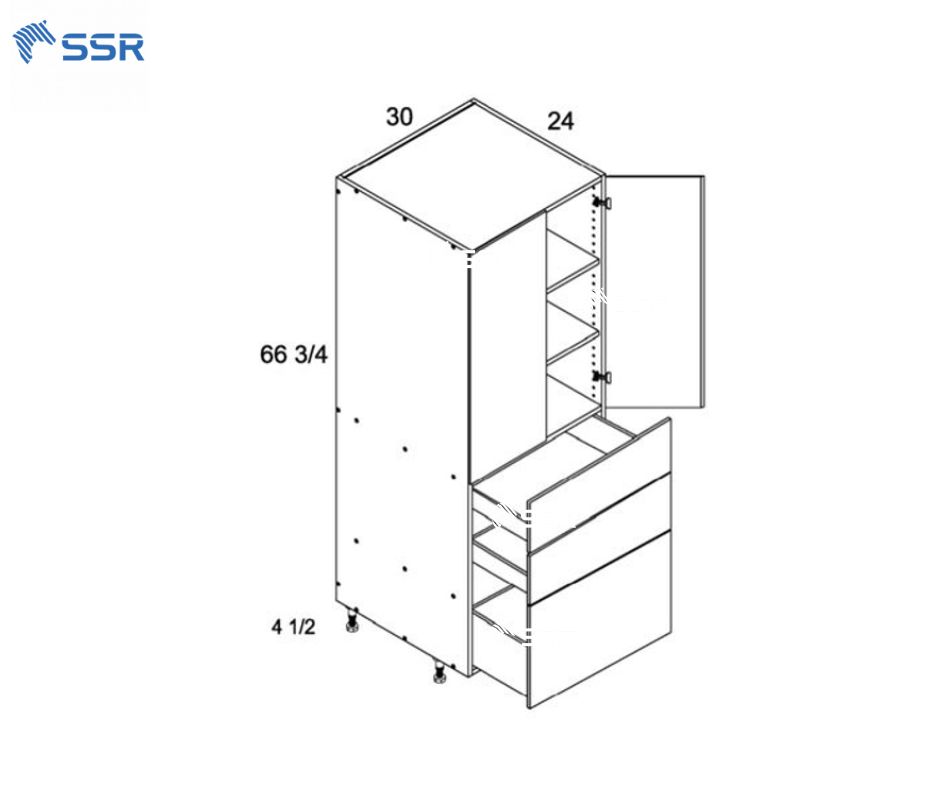
Tall cabinet 2 doors 3 drawers
| Size (mm) | Size (inches) | |
| Depth | 609.6 | 24 |
| Width | 457,2/609,6/762/838,2 | 18/24/30/33 |
| Height | 1676/2133,6/2286/2438,4 | 66 ¾”/84/90/96 |
- Kitchen Island
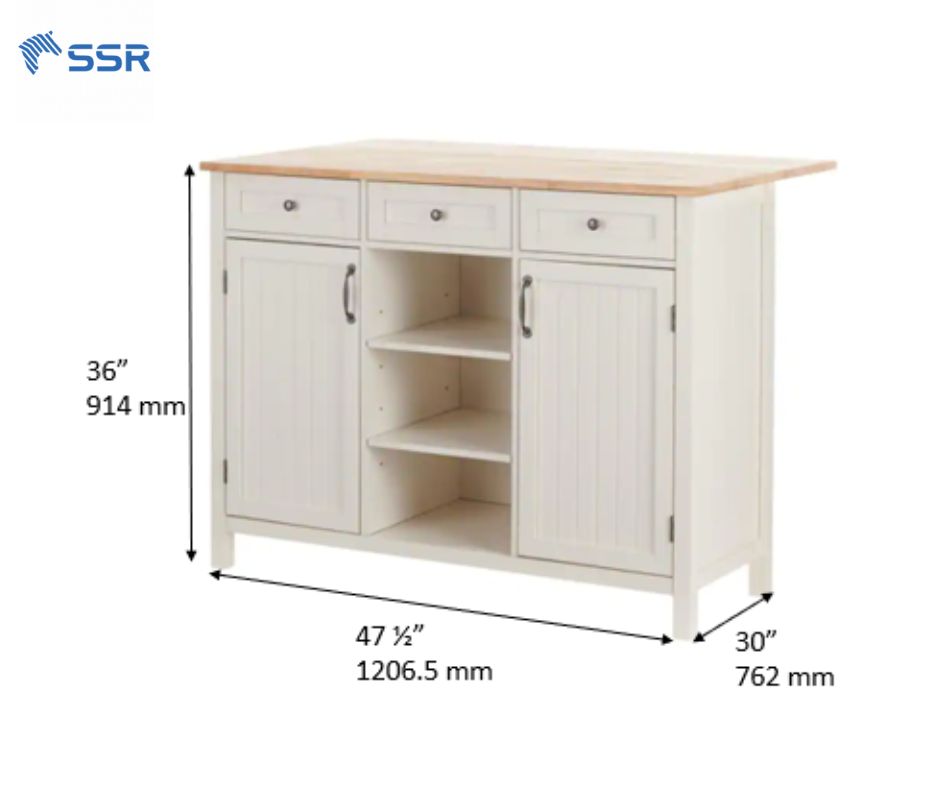
| Size (mm) | Size (inches) | |
| Depth | 533-914 | 21-36 |
| Width | 1016-1397 | 40-55 |
| Height | 914 | 36 |
FAQs

RTA cabinets
What are RTA cabinets?
RTA (Ready-To-Assemble) cabinets come in flat packs with pre-drilled holes, designed for easy DIY installation.
How to choose hardware for cabinets?
Consider material, finish, and ergonomics. Popular choices include brushed nickel, matte black, and brass.
Can I use kitchen cabinets in my bedroom?
Yes, they can serve as wardrobes, bookshelves, or storage units.
Why are kitchen cabinets important in design?
They define the kitchen’s style, improve functionality, and maximize space efficiency.
Is installing kitchen cabinets easy?
It depends on skill level. RTA cabinets are easier, while custom cabinets may require professional installation.
How long should kitchen cabinets last?
Well-maintained cabinets can last 20-30 years.
What is the purpose of kitchen cabinets?
They provide storage, enhance aesthetics, and improve kitchen efficiency.
What is the popular style of cabinets?
Shaker cabinets are widely preferred for their versatility and timeless appeal.
Can a beginner make kitchen cabinets?
Basic DIY skills can help with simple designs, but professional expertise ensures quality.
How do I know if my kitchen cabinets are good quality?
Check for solid construction, smooth finishes, soft-close hardware, and durable materials.
Conclusion
Kitchen cabinets play a crucial role in both aesthetics and functionality. By understanding different types, materials, and construction methods, you can make informed decisions when designing or upgrading your kitchen. Whether you need a modern touch or a classic look, SSR VINA offers high-quality, customizable solutions to suit your needs.
read more:
Eco-Friendly Acacia Chevron Countertops Eco-Friendlyfor Timeless Elegance
Featured Products
Acacia Wood Butcher Block Countertops Supplier
Specifications:
- Species: Acacia
- Moisture: < 12%
- Wood Stave (Length): 150-400 mm
- Wood Stave (Width): 30-80 mm
- Length & Width tolerance: 0/+3 mm
- Thickness tolerance: +/- 0.2 mm
- Glue: D4
- Quality: AB, BC or customized
- Surface finish: Sanding 180-240 grit, 2 faces
Rubberwood Finger Joint Board Supplier
- Species: Rubberwood
- Moisture: <12 %
- Wood Stave (Length): 150-600 mm
- Wood Stave (Width): 35-80 mm
- Length & Width tolerance: 0/+3 mm
- Thickness tolerance: +/- 0.2 mm
- Glue: D4
- Quality: AA, AC or customized
- Surface Finish: sanding 240-320 grit, 2 faces
Birch Butcher Block Countertop Supplier
Specifications:
- Species: Birch
- Moisture: < 12%
- Wood Stave (Length): 150-400 mm
- Wood Stave (Width): 20-80 mm
- Length & Width tolerance: 0/+3 mm
- Thickness tolerance: +/- 0.2 mm
- Glue: D4
- Quality: AB, AC or customized
- Surface finish: Sanding 180-240 grit, 2 faces.
Featured News
Related News
SSR VINA becomes VCCI Member: A New Milestone
SSR VINA is proud to announce its official VCCI member (Vietnam Chamber of Commerce and Industry) – the nation’s leading organization representing the business community and employers in Vietnam. This marks a significant milestone in SSR VINA’s journey to enhance the global presence of “Made-in-Vietnam” products, reaffirming our commitment to quality, innovation, and sustainable growth. […]

Bamboo Cutting Board Tips for Distributors – SSR VINA
Bamboo has become a popular alternative to traditional hardwoods when it comes to kitchen cutting boards. But is it really a good choice for your kitchen? In this guide, we’ll cover everything from the benefits and downsides to care instructions, environmental impact, and FAQs. What is a Bamboo Cutting Board? A bamboo cutting board is […]

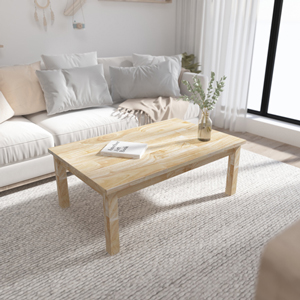
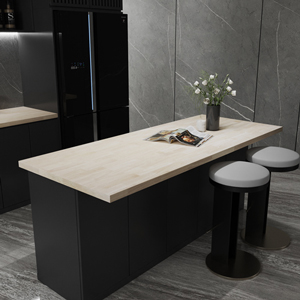
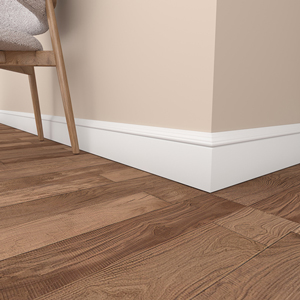
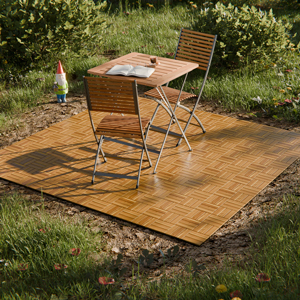
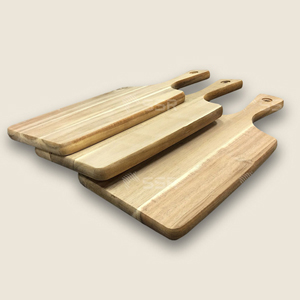


 Tháng 3 27, 2025
Tháng 3 27, 2025 | mkt.ssr.ha
| mkt.ssr.ha